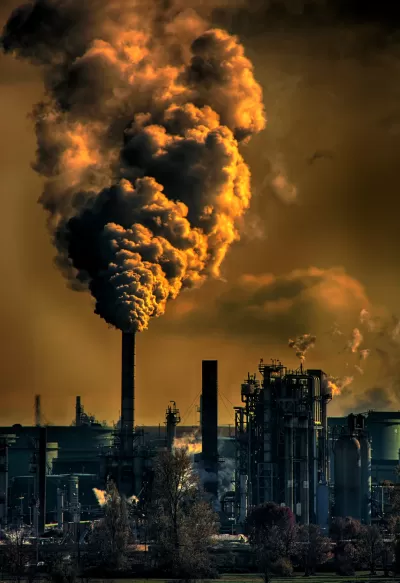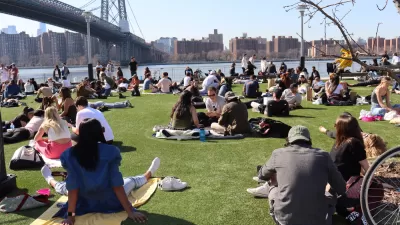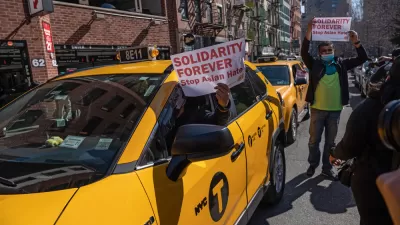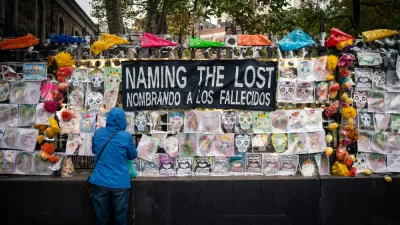Communities exposed to higher levels of air pollution experience higher rates of infection, particularly in areas with high population density.

Shahla Farzan reports on new research from a dozen U.S. cities that reveals that "coronavirus spreads faster in areas with worse air pollution and higher population density," putting communities of color at higher risk for transmission.
"Roughly one-third the size of a red blood cell, microscopic particles known as PM 2.5 penetrate deep into the lungs and cause a wide variety of illnesses. The dust-like pollution also reshapes the cells in our bodies, causing them to produce proteins that act as doorways. That allows the coronavirus to invade the cells," Farzan writes. This means that poor air quality can worsen COVID-19 symptoms, according to Rajan Chakrabarty, a Washington University aerosol scientist. Meanwhile, Farzan notes that "Black people and Latinos across the U.S. are exposed to higher-than- average levels of air pollution from nearly every source, including power plants, construction and agriculture. They are also two to three times as likely to die of COVID-19 than white people." Even when controlling for other factors, air pollution and population density were shown to have the biggest impact on transmission rates.
As we noted early in the pandemic, COVID-19 highlighted the damaging impacts of decades of disenfranchisement and disinvestment on communities of color and low-income households, who now face a growing set of interrelated challenges that include rising housing costs, inadequate infrastructure, and health hazards compounded by the uncertainty of the pandemic.
FULL STORY: Air pollution in St. Louis helps fuel coronavirus spread, especially in communities of color

Trump Administration Could Effectively End Housing Voucher Program
Federal officials are eyeing major cuts to the Section 8 program that helps millions of low-income households pay rent.

Planetizen Federal Action Tracker
A weekly monitor of how Trump’s orders and actions are impacting planners and planning in America.

Ken Jennings Launches Transit Web Series
The Jeopardy champ wants you to ride public transit.

Washington Legislature Passes Rent Increase Cap
A bill that caps rent increases at 7 percent plus inflation is headed to the governor’s desk.

From Planning to Action: How LA County Is Rethinking Climate Resilience
Chief Sustainability Officer Rita Kampalath outlines the County’s shift from planning to implementation in its climate resilience efforts, emphasizing cross-departmental coordination, updated recovery strategies, and the need for flexible funding.

New Mexico Aging Department Commits to Helping Seniors Age ‘In Place’ and ‘Autonomously’ in New Draft Plan
As New Mexico’s population of seniors continues to grow, the state’s aging department is proposing expanded initiatives to help seniors maintain their autonomy while also supporting family caregivers.
Urban Design for Planners 1: Software Tools
This six-course series explores essential urban design concepts using open source software and equips planners with the tools they need to participate fully in the urban design process.
Planning for Universal Design
Learn the tools for implementing Universal Design in planning regulations.
Heyer Gruel & Associates PA
Ada County Highway District
Institute for Housing and Urban Development Studies (IHS)
City of Grandview
Harvard GSD Executive Education
Toledo-Lucas County Plan Commissions
Salt Lake City
NYU Wagner Graduate School of Public Service





























